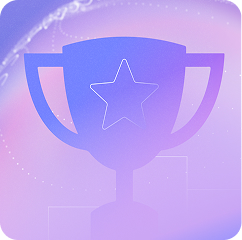
// Sourcing Strategies, Executive Search Best Practices, Recruitment Strategies
4 Ways to Use AI to Level Up Your Executive Candidate Sourcing Strategies
28/08/2024
11 MIN
Many view sourcing as the easy part of the hiring process, but when it comes to effective sourcing strategies, you might want to think again.
While a high-quality interview is essential for a successful hire, no amount of interviewing will turn the wrong candidate into the right one. Simply posting a job advert on LinkedIn or a job site may not attract the ideal candidate – what are the chances that the perfect person is actively searching and stumbles upon your job posting?
Sourcing is a critical component of executive search, giving executive search recruiters the opportunity to scan the entire market of qualified professionals and identify those who can make the biggest impact for their hiring managers.
The challenge? Competing executive search professionals are using the same sourcing strategies.
This is where using AI tools in your sourcing process can give a distinct edge in a competitive market. Let’s explore how.
What are the various executive candidate sourcing strategies?
To succeed in executive search, it is not about casting a wide net but about using precise, targeted strategies to identify the right fit. Here’s how you can refine your approach to ensure you’re not just finding qualified candidates, but securing the best leaders for your clients:
1. Proactively network to build and maintain executive recruitment relationships
One of the cornerstones of effective executive search is proactive networking. It’s not enough to reach out to candidates when a position opens up – you need to engage with potential leaders long before that moment.
By establishing relationships early, you can keep a close eye on their career trajectories and be ready to approach them when the right opportunity arises. This ongoing dialogue ensures you’re top of mind when they’re considering their next move, giving you a distinct advantage in the competitive market.
2. Use Boolean search techniques to refine executive talent searches
For the uninitiated, Boolean search is a method of using specific operators (AND, OR, NOT) to refine search results. These methods, which use specific operators like AND, OR, and NOT, allow you to zero in on qualified candidates with the exact skill sets you’re looking for. We’ve explained more about how you can use ChatGPT to find new keywords.
On platforms like LinkedIn and Atlas, Boolean searches help you filter through the noise to pinpoint those rare candidates who meet your highly specific criteria. This precision is crucial when you’re sourcing for senior roles where every skill and experience matters.
With advanced filtering options and a powerful search experience, sourcing candidates is easier and faster.
3. Attend industry conferences and events to meet potential candidates
Sometimes, the best way to assess a candidate’s potential is in person, outside the formal constraints of an interview. Industry-specific conferences and events provide the perfect setting for this.
These gatherings not only allow you to meet potential executives who are active in their fields but also give you the opportunity to observe how they interact in a more informal context. These settings can offer invaluable insights into a candidate’s personality, thought leadership, and cultural fit.
4. Leverage referrals to find pre-vetted executive-level candidates
Referrals have long been a reliable sourcing strategy, particularly for executive-level positions. When a candidate comes recommended by someone within an organisation or industry, they arrive pre-vetted and with a seal of approval from a trusted contact.
This not only saves time but often leads to higher success rates, as referred candidates tend to align more closely with your company’s culture and expectations.
What is a search strategy in the executive search process?
A search strategy in executive search is a comprehensive plan designed to identify, attract, and secure top-level talent for key leadership roles. This strategy involves several key components, each tailored to ensure that the search is thorough, targeted, and effective. Here’s what a typical search strategy entails:
1. Define the role as an executive recruiter
Start by defining the role with precision, understanding the specific skills, experiences, and personality traits required for the position. Ensure that the role aligns with the company’s culture, strategic goals, and long-term vision.
Identify the core competencies needed for success in the role, such as leadership abilities, industry-specific expertise, and any specialised knowledge.
2. Conduct market research
Conduct thorough research to understand the current market landscape. This includes identifying leading companies, emerging trends, and where the top talent in the industry is currently located.
Analyse competitors to see who they have in similar roles and assess whether these individuals might be viable candidates or if they provide insights into what your ideal candidate might look like.
Create a map of potential qualified candidates, including those currently employed by competitors or those known for their expertise in relevant fields.
3. Develop a comprehensive candidate database outreach strategy
Develop a tailored outreach plan that includes highly personalised communication. This might involve direct messaging on platforms like LinkedIn, personalised emails, or even strategic calls.
Use existing professional networks, industry contacts, and internal referrals to connect with potential candidates. Engaging with your network can help surface candidates who might not be visible through traditional search methods.
Focus on passive candidates—those who are not actively seeking new roles but might be open to the right opportunity. This involves crafting compelling messages that highlight the unique aspects of the role and why it might be a great fit for them.
See how you can create personalised outreach campaigns on Atlas
4. Use multi-faceted executive sourcing strategies for assessment and evaluation
Use a variety of assessment tools to evaluate potential candidates. This could include psychometric testing, case studies, and scenario-based interviews that go beyond traditional resume reviews and interviews.
Assess how well the candidate’s values and work style align with the company’s culture. This is crucial for ensuring long-term success and integration within the organisation.
Conduct thorough reference checks and validate the candidate’s background, achievements, and fit for the role.
5. Close the deal and plan for onboarding
Once the ideal candidate is identified, work on crafting a competitive offer that meets both the candidate’s and the company’s expectations.
Plan for a smooth transition into the new role, ensuring that the candidate is well-integrated into the company culture and has the support needed to succeed from day one.
A well-defined search strategy in executive search is about more than just finding candidates – it’s about finding the right candidates who align with the company’s goals and culture.
4 Ways AI and ChatGPT Can Drive Executive Search Firms’ Sourcing Strategies
In executive search, the stakes are high, and the margin for error is slim. Traditional methods – relying on networks, gut instincts, and manual searches – are no longer enough. AI tools are reshaping how recruiters source top executive talent.
Integrating AI into your sourcing strategies, especially with tools like ChatGPT, can deliver impressive results. ChatGPT is far more than a tool for creative writing – it’s a powerful asset that can take your sourcing strategies to the next level. Here are four ways to elevate your sourcing game using AI.
1. Refine keyword searches for precision
Finding the right candidate often starts with the right keywords. But in the complex world of executive roles, the right terms aren’t always obvious. AI can help you uncover relevant keywords and phrases that you might not have considered.
Imagine you’re tasked with hiring a data scientist who needs experience with DBT, but you’re not familiar with what DBT is or if there are similar systems with transferable skills. No problem—ask ChatGPT for a set of relevant keywords.
For example, you could get a list like:
(“data engineering” OR “data modeling” OR “SQL” OR “ETL” OR “data pipelines” OR “Apache Airflow” OR “Snowflake” OR “Looker” OR “BigQuery” OR “analytics engineering” OR “data integration” OR “data warehousing” OR “Python” OR “Git” OR “Jinja” OR “data transformation”)
You don’t need to know what DBT is because ChatGPT already does. And if you want to dig deeper, you can ask why someone with BigQuery experience would be a good fit for a role requiring DBT. A quick ChatGPT prompt will tell you that both BigQuery and DBT rely on the same underlying language, SQL.
By refining your search parameters with AI’s guidance, you widen your net in the right direction, capturing a more diverse and qualified pool of candidates.
2. Expand your search beyond traditional job titles
In executive search, job titles often vary widely across industries and organisations. The ideal candidate for a Chief Technology Officer position at a startup might be working as a VP of Engineering at a tech giant.
Or imagine you’re tasked with finding a DevOps engineer who excels with Kubernetes – AI tools like ChatGPT can help you expand your search by suggesting other relevant titles, such as ‘Site Reliability Engineer,’ ‘Cloud Engineer,’ or ‘DevOps Architect.’
AI pushes you to think beyond conventional job titles by analysing job descriptions, career paths, and industry trends. It can recommend alternative roles and titles that align with your needs, ensuring you don’t overlook top executive talent just because they don’t fit neatly into a predefined category.
By broadening your search to include these roles, you’re exploring less crowded avenues, increasing your chances of finding the perfect candidate.
3. Understand and analyse candidate profiles deeply
AI doesn’t just stop at keywords and titles; it dives deep into candidate profiles, helping you make sense of complex experiences and skill sets.
Often, top-tier leadership candidates have a wealth of experience that isn’t easily categorised. A resume might list “digital transformation” or “business development,” but what do those terms actually mean in the context of you identifying industry leaders?
AI can break down these broad terms into specific skills, achievements, and experiences, providing you with a clearer picture of a candidate’s fit. This deeper understanding allows you to match candidates to roles with greater accuracy, even if their resumes don’t use the exact language as your job descriptions.
Using platforms like Atlas, which leverage AI to refine candidate data with precision, sourcing candidates becomes easier. You can filter down prospective candidates in seconds, while an AI assistant helps you gain deeper insights into each one.
4. Engage passive candidates with tailored outreach
The best executive hires often aren’t active job seekers – they’re busy leading their current organisations to success.
AI can be your ally in reaching out to these passive candidates by crafting personalised, compelling messages that speak directly to their career aspirations and achievements. By analysing a candidate’s professional background, social media presence, and even recent industry contributions, AI helps you tailor your approach, making your outreach more effective.
It’s not just about sending another generic message; it’s about engaging with top-tier talent in a way that resonates with them personally, increasing the likelihood that they’ll consider your opportunity.
Why You Need to Integrate AI in Your Executive Candidate Sourcing Strategy
Incorporating AI into your executive search strategy isn’t just about keeping pace with industry trends – it’s about gaining a competitive edge. Those who harness AI’s capabilities will find themselves better equipped to navigate the complexities of sourcing top executives.
While ChatGPT is a powerful tool, its $20 per month cost might not suit every budget. If you’re looking for alternatives, you can consider options like Anthropic’s Claude or Google’s Gemini, which offer similar chat-based models.
In executive search, you often need multiple tools like an applicant tracking system (ATS) and CRM and other tools for many tasks like interview scheduling, note-taking, analytics, campaign management, and report generation. Instead of juggling all these, you could use a single platform like Atlas that makes your sourcing process easier with AI-driven features.
It’s a complete solution designed to optimise every part of your sourcing strategy. With its AI capabilities, Atlas can automatically analyse emails and interview notes, giving you deeper insights into candidate profiles. It has advanced filtering options and lets you build a customised sourcing pipeline, create personalised outreach campaigns, schedule interviews, and manage workflows – all in one place. This integration speeds up your sourcing process, making it more accurate and, in the end, more successful.
Whatever path you choose, integrating AI tools like ChatGPT or a platform like Atlas can speed up your sourcing process, make it more effective, and far more enjoyable.
Try Atlas now!











